A Classic’s Centennial: Little Orphan Annie
Skip to commentsOne hundred years ago in the pages of The New York Daily News …
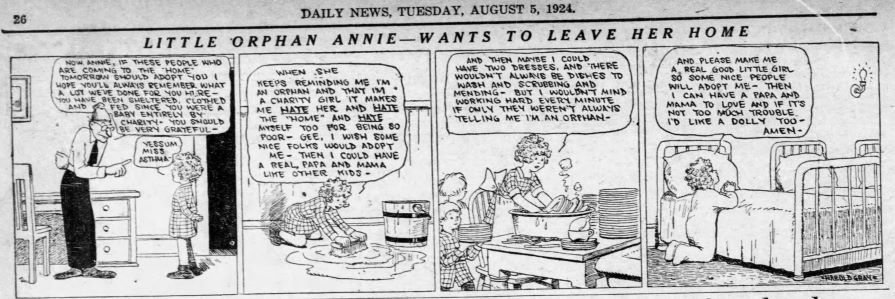
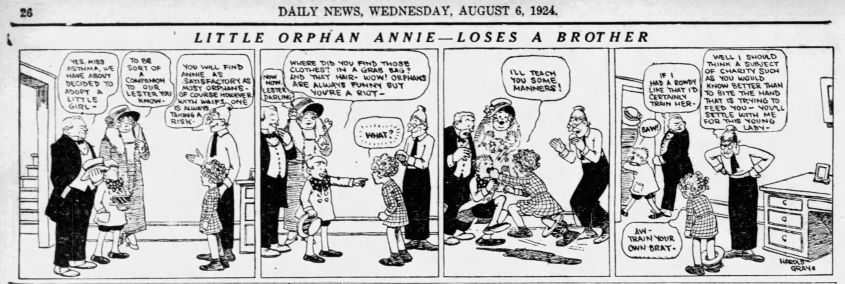
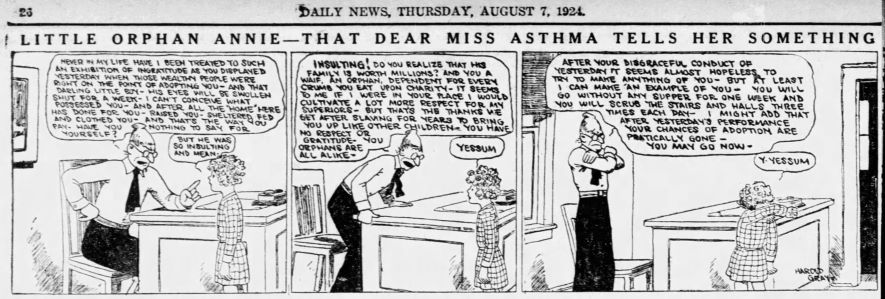

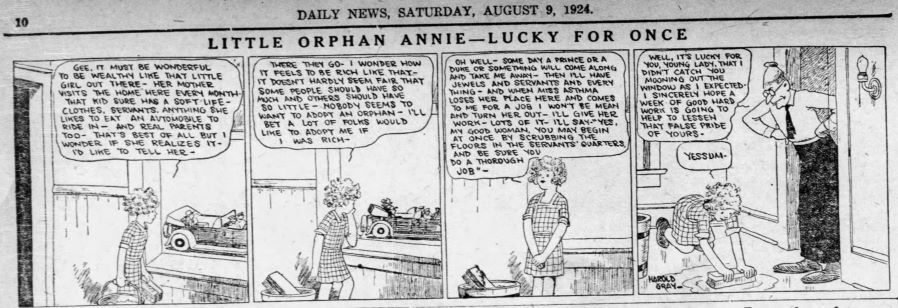
The world, or New York anyway, was introduced to the spunky Little Orphan Annie by Harold Gray.
Not too far in the future Annie would meet “Daddy” Warbucks and, off and on, be a part of his household.
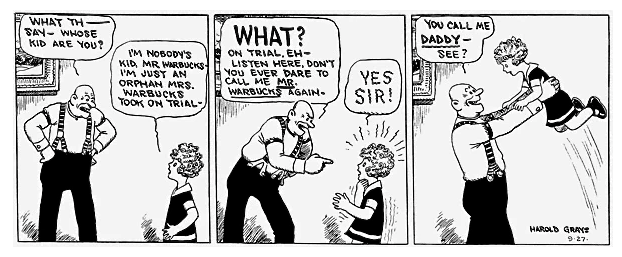
Within a month of that September 27, 1924 meeting Annie would be separated from “Daddy” in what would prove to be a continuing problem. However early in the new year Annie would befriend someone who would be her constant companion for the rest of her comic strip life.

Sandy is first seen on January 5, 1925. Arf!
So the core of the cast is set and the already popular comic strip would go on to be an undisputed classic.
For those few unaware DerikBadman does a wonderful job of summarizing the strip in his 2005 review of the (highly recommended) 1970 hardbound collection Arf! The Life and Times of Little Orphan Annie, 1935-1945:
Annie is an orphan, who’s brave, self-reliant, and kind. Her constant companion is her dog Sandy (who in Gray’s art looks like some kind of lynx/monster with a ceaseless grin). She lives with Oliver “Daddy” (always in quotes) Warbucks, a extremely wealthy capitalist businessman, who talks a lot of libertarian philosophy (but in a down home kind of way) about hard work and spreading the wealth around (in the first sequence his new factory is successful so he raises the pay of all his workers and gives them better benefits, instead of taking it all himself). Oddly, Warbucks never seems to have a home; he is always on the go or staying with someone else.
The stories follow a predictable but oddly never dull cycle: “Daddy” goes away, often on a business journey, though later the war intervenes, as well as kidnappings, and other troubles; Annie–no matter where “Daddy” leaves her–ends up embroiled in trouble or is left to fend for herself; “Daddy” returns–often in time to save the day; “Daddy” and Annie solve the current situation, perhaps get into more trouble, often while vacationing; and then “Daddy” goes away again. This sequence happens quite a few times over the course of this book, always with some slight variation. In this way Gray offers a constantly shifting set of characters (the only other consistently reoccurring characters in what I read were Warbucks’ mysterious companions “Punjab” and “The Asp”) and settings (from small towns and farms to big cities to islands to castles).
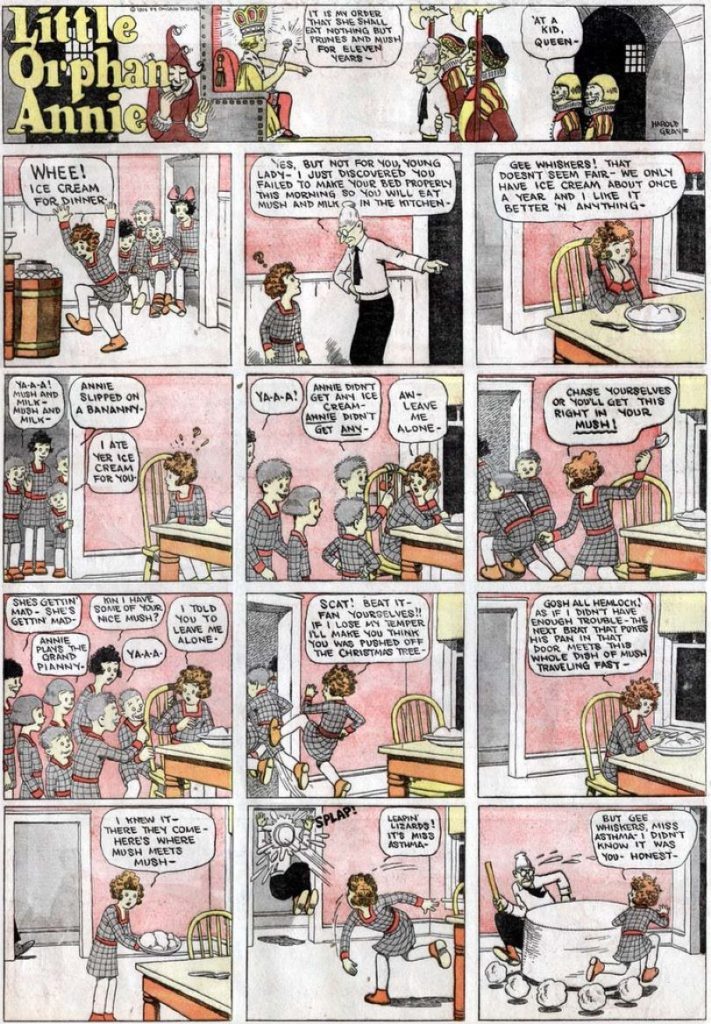
DerikBadman continues:
Harold Gray is well-known as very conservative in his politics and this comes out quite clearly in the strip. The virtue of hard work and the ability of anyone to make it big if they just work hard enough is brought up numerous times. Other themes he returns to include: the gullibility of the public, gossip, the willingness of people to help each other out because they are “good folks”, and often the need to break the law for the right reasons. Warbucks serves as a model of the caring billionaire who’s always helping others out while following his rather strict code. I find the politics often distasteful, but it doesn’t take away from the success of the comic.
Gray’s art is cruder than most strips. He’s no Caniff or Raymond. Nor is he a Schulz or Segar. Gray’s characters are kind of stiff. We mostly see them from the waist up, rarely see feet. The action is all done with a very non-active drawing style. When he does illustrate some kind of activity (Annie punching a bully see below) it tends to look out of sorts…
The more I look at the art, the more I appreciate it. It’s deceptive at first glance, rough and stiff, yet, it so smoothly conveys all that needs to be conveyed both plot-wise and emotionally.
And it would go until Harold Gray’s death in 1968.
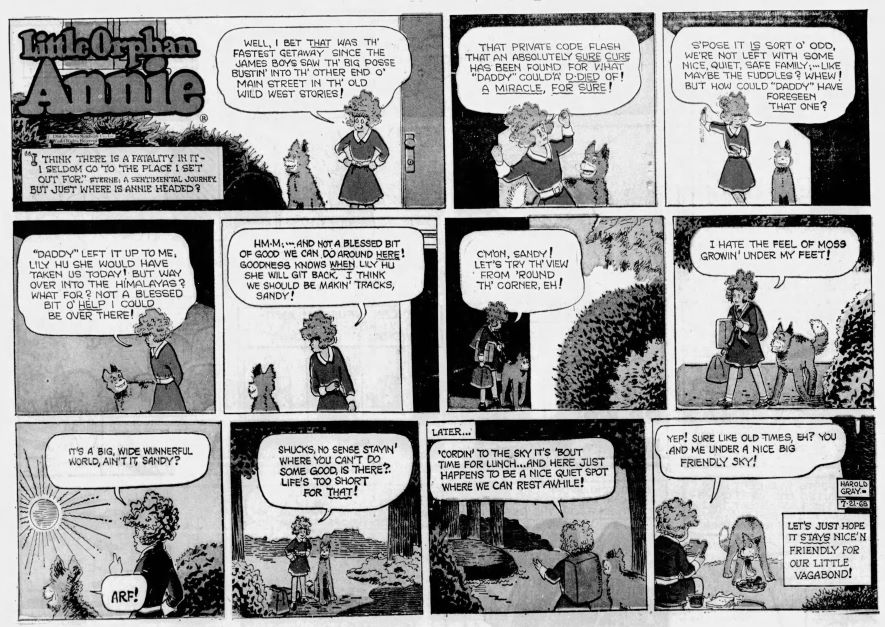
From the very first strip, which debuted today, ninety six years ago in the New York Daily News, Harold Gray established the emotional tenor that would distinguish Little Orphan Annie. Compared to the elaborate and carefully-conceived novel-length narratives Gray created in the 1930s and 1940s, the early Annie strips might seem a bit crude: the drawings are roughhewn (although his line fluid), the plotting has a shambling, seat-of-your-pants haphazardness, and there are occasional longueurs as Annie dawdles around while Gray waits for the next bit of inspiration to hit.
But the main components of the strip are there from the start: at the heart of the series is Annie, much-abused but spunky enough to fight back with a sharp tongue and a good left hook.
For those wanting to know more comics historian Jeet Heer at LitHub details the early life of Harold Gray and how that would form the philosophy he would bring to his Annie in The Complex Origins of Little Orphan Annie.
Harold Gray was thirty years old when he created Annie and, despite the occasional storytelling misstep and moments of uncertainty, he knew what he was about. This confidence came from the fact that Little Orphan Annie didn’t just spring up full-blown in a fit of wild inspiration. Rather, the strip was the culmination of many years of hard work and ambitious planning. Everything in Gray’s early life—his family background and upbringing, his schooling and military service, his wide-reading and early career—went into the making of Little Orphan Annie. Like his famous creations, Gray was a fighter and a straight-shooter. To look at his life is to see the foundation and building blocks of his work.

But the strip did not end with Gray’s death, the syndicate hired cartoonists to continue the strip.
Long ago I tried to determine Gray’s assistants on the strip, the ghost artists who worked on the strip from 1968 to 1974, and list those who were allowed to sign the strip beginning in 1974 (corrections encouraged):
LITTLE ORPHAN ANNIE/ANNIE
daily: August 5, 1924 – June 12, 2010
Sunday: November 2, 1924 – June 13, 2010
HAROLD GRAY
creator/writer artist
dailies: August 5, 1924 – July 20, 1968*
Sundays: November 2, 1924 – July 21, 1968*
*These would be the last strips that carried the
Harold Gray signature. July 21 is pretty universally
tagged as the last Gray Sunday, but July 20 not so
with the dailies. The CSC archives contain a list by
Bill Slankard that gives May 9, 1968 as the last Gray
daily. Any confirmation on that?
[The CSC is a Yahoo Group.]
EDWIN W. (ED) LEFFINGWELL
art assistant ????? – 1936
ROBERT (BOB) LEFFINGWELL
art assistant 1936 – 1968
ROBERT LEFFINGWELL
artist? writer?
1968? – 1968?
Some say that Leffingwell attempted to continue the
strip for the syndicate and they quickly realized he
didn’t have the talent to do the strip.
Others say that upon Gray’s death the strip was immediately
taken over by CT-NYN Managing Editor Henry Raduta
and CT-NYN staff artist Henri Arnold.
Comics historian Jud Hurd, a friend and neighbor of
Gray’s in the years leading up to his death, has
written that, “Bob Leffingwell…was no longer
involved with the strip after Gray’s death.”
HENRY RADUTA
writer
1968 – 1968
No start or stop dates.
Did he write for Leffingwell?
Did he and Arnold start straight off Gray?
HENRI ARNOLD
artist
1968 – 1968
Again, no start or stop dates.
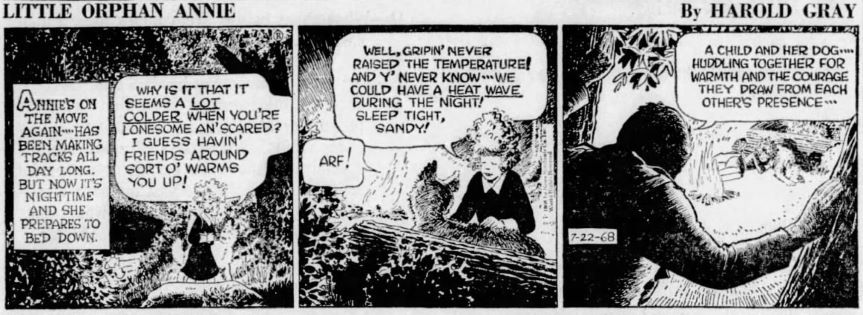
ELLIOT CAPLIN
writer
daily: 1968 – August 18, 1973
Sunday: 1968 – August 19, 1973
No exact start dates.
End dates sussed from Bill Slankard’s
credits given in the CSC archives.
Conventional wisdom has Elliot Caplin as the
writer during the Tex Blaisdell years, but I have
him listed as “assistant writer” and Jerry Caplin
as “co-writer”. Unfortunately I no longer have a
source for this attribution. But Elliot had his
hands in many projects and it is not out of the
realm of possibility that he enlisted the help of
his brother. Still I can’t confirm.
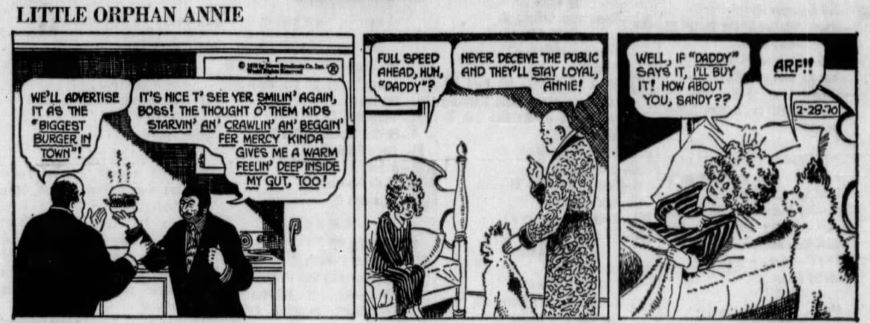
PHILIP ‘TEX’ BLAISDELL
artist
daily: July 22, 1968 – December ??*, 1973
Sunday: 1968 – December ??*, 1973
The daily start date is again from the Slankard post.
If true then it would mean that the earlier team of
Raduta and Arnold were continuing the strip under
Gray’s signature.
Ironically, famous background artist Blaisdell was
assisted here on backgrounds by Annette Lee Marrs
(1968) and Paul Kirchner (1973).
Lee Marrs source is from some interview, IIRC,
no source for the Kirchner credit.
*Unsure if Tex Blaisdell went all the way through December 1973.
MICHAEL FLEISHER
JOE ORLANDO
writers
daily: August 20, 1973 – February 5, 1974 (a Tuesday)
Sunday: 1973 – February 3, 1974
Start date courtesy Slankard.
I have tied Fleisher and Orlando together.
Orlando’s credit on LOA has not been consistent
through the years. (A typo on the Bails’ Who’s Who
site has led to a number of sites crediting Orlando
as the writer of the strip in 1964.)
My notes have the two together with Fleisher as writer
and Orlando as “editor/co-plotter/continuity”.
Again – no source.
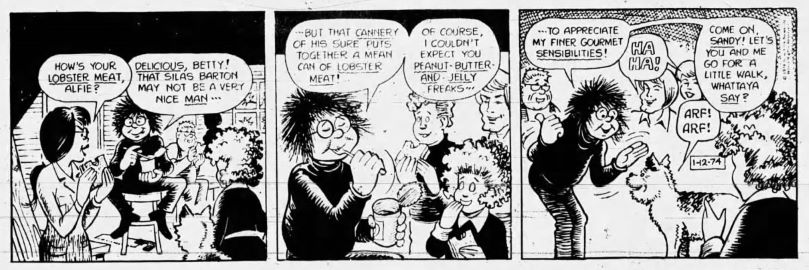
VIC MARTIN
artist
daily: December 31, 1973 – February 5, 1974 (a Tuesday)
Sunday: December 30, 1973 – February 3, 1974
Before moving on to David Lettick, some more names…
ALLEN SAUNDERS
Jerry Robinson, in his The Comics, credits the Steve
Roper writer as “story consultant”. Robinson does not
say who he consulted. Leffingwell? Raduta? Fleisher?
BILL WILLIAMS (ALFRED O. WILLIAMS)
and
WINSLOW MORTIMER
A 1974 Washington Post article introducing David Lettick
as the new creator of LOA lists all the previous
contributors since Gray. He names these two, but doesn’t
say what they did or with who they did it.
BILL WRIGHT and BEN ODA
Leiffer and Ware’s Comic Strip Project list
these two as letterers during the post-Gray years.

DAVID LETTICK
writer/artist
daily: February 6, 1974 (a Wednesday) – April 20, 1974
Sunday: February 10, 1974 – April 21, 1974
Source – The Lima News
David Lettick was the first contributor allowed
to sign his name since the last Harold Gray signature.
HAROLD GRAY REPRINTS
daily: April 22, 1974 – December 1, 1979
Sunday: April 21, 1974 – December 2, 1979
The April 21, 1974 Sunday strip was split between the
end of Lettick’s run and the beginning of the Gray reprints.
A list of the original runs of the Gray reprints is here.
LEONARD STARR
writer/artist
daily: December 3, 1979 – December 8, 1979
This week of dailies transitioned from the Gray reprints
to setting up Starr’s run.
Listed separate from the rest of Starr’s tenure on the
strip because I believe this week was still officially
published under the title “Little Orphan Annie.”
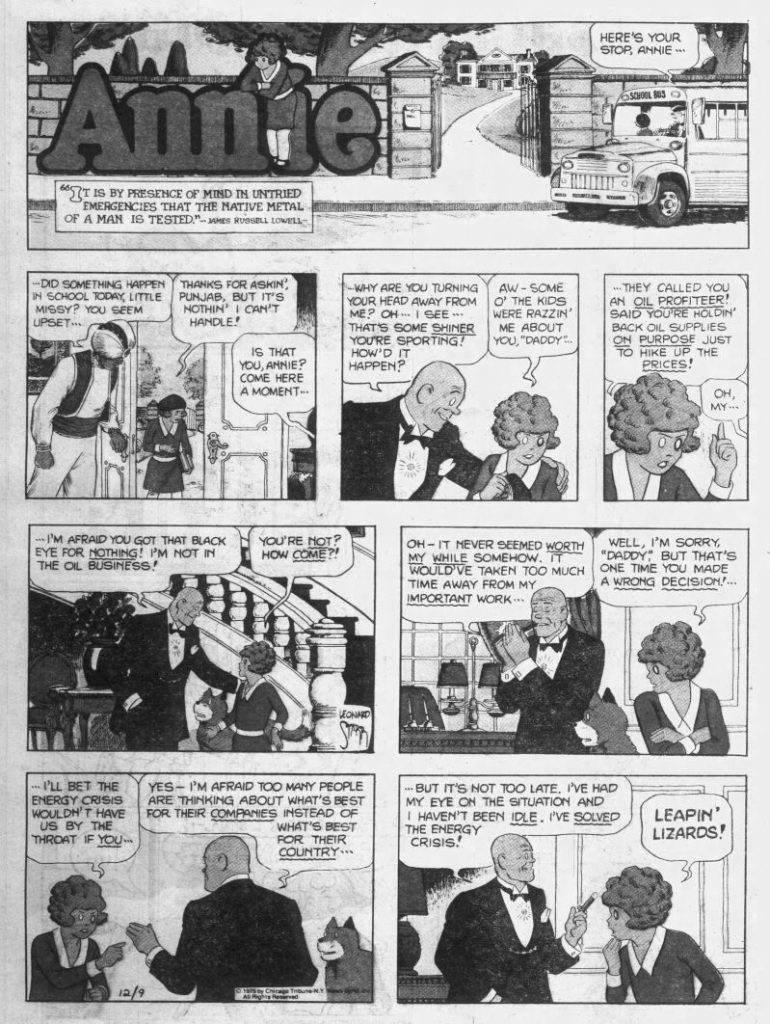
LEONARD STARR
writer/artist
daily: December 10, 1979 – February 19, 2000
Sunday: December 9, 1979 – February 20, 2000
With the December 9 entry the strip is officially
(I think) retitled “Annie”.
The Comic Strip Project lists “Frank Bolle, Jr.” as
Starr’s art assistant (backgrounds) for 9 years,
and Susan Fox as letterer during the 1990s.
I have Frank Bolle as letterer from 1986 – 1994.
Starr is quoted as saying that Bolle “pencilled a
sequence from my roughs.”
LEONARD STARR REPRINTS
daily: February 21, 2000 – June 3, 2000
Sunday: February 27, 2000 – June 4, 2000
JAY MAEDER
writer
daily: June 5, 2000 – June 12, 2010
Sunday: June 11, 2000 – June 13, 2010
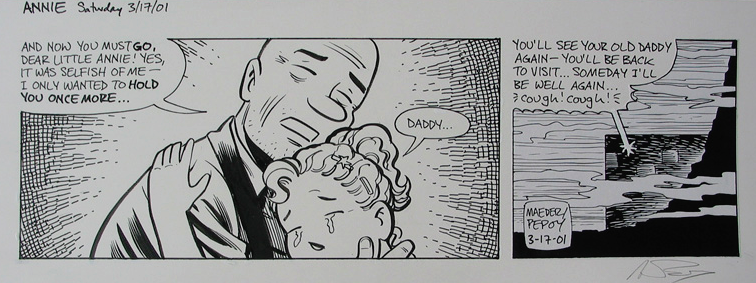
ANDREW PEPOY
artist
daily: June 5, 2000 – March 31, 2001
Sunday: June 11, 2000 – April 1, 2001
Pepoy also, supposedly, retouched the May 27, 2000 Len Starr reprint.
Some Pepoy Annies (along with Blaidell and Lettick) here.
ALAN KUPPERBERG
artist
daily: April 2, 2001 – July 3, 2004
Sunday: April 8, 2001 – July 11, 2004
TED SLAMPYAK
artist
daily: July 5, 2004 – June 12, 2010
Sunday: July 18, 2004 – June 13, 2010
The Maeder/Slampyak strips are currently being posted at GoComics.
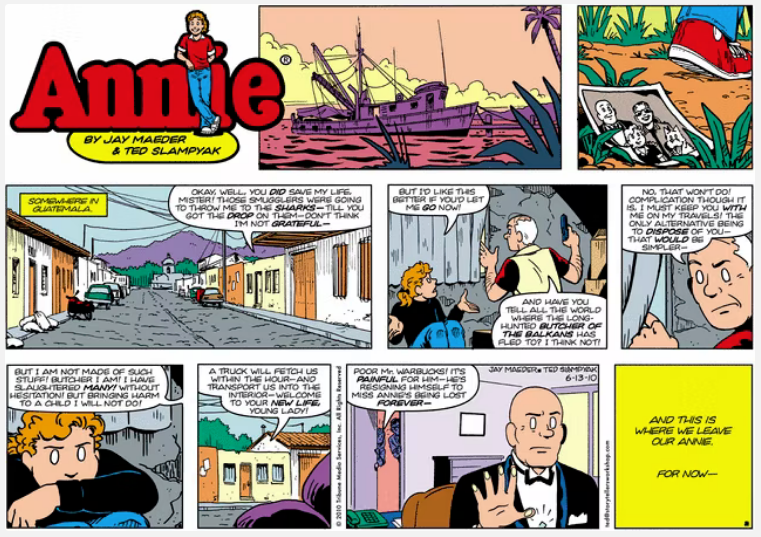
With Mike Curtis taking over Dick Tracy Annie has become an occasional guest star at that strip.

When Little Orphan Annie came to an end comics historian R. C. Harvey wrote a history of the strip.
On May 13, 2010, Tribune Media Services announced its intention to stop production and distribution of one of cartooning’s iconic creations, the newspaper comic strip Little Orphan Annie. The resilient redheaded teenager made her last appearance in the nation’s newspapers on Sunday, June 13, just two months shy of celebrating an 86-year run. But the longevity, while notable, is deceptive: the strip foundered badly after the death of its creator, Harold Gray, in 1968, and while one of Gray’s successors righted the craft for two decades, Annie never again achieved the circulation or cultural status it enjoyed in Gray’s hands, proving yet again that a comic strip, uniquely the product of individual inspiration, usually cannot survive the death of its creator. And Gray’s strip was more idiosyncratic than most.
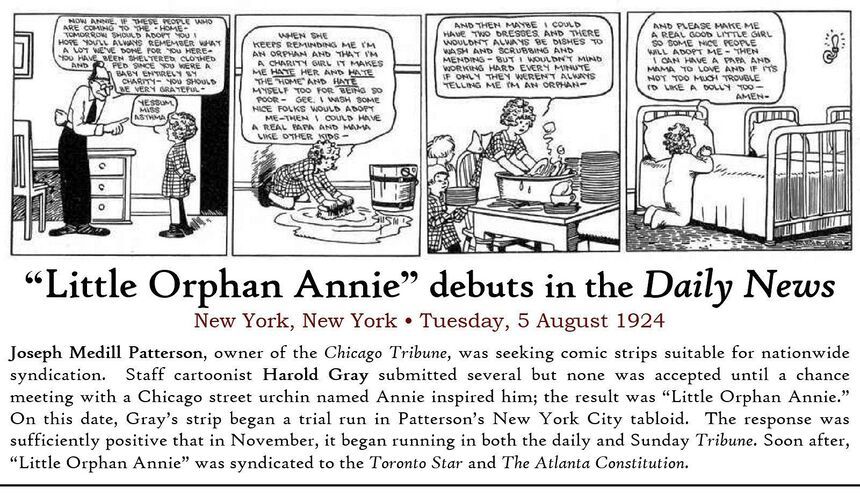
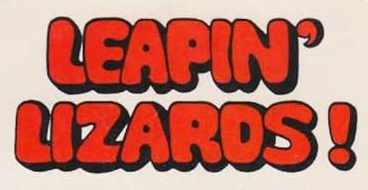

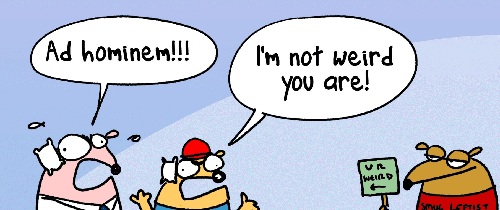
Comments 2
Comments are closed.